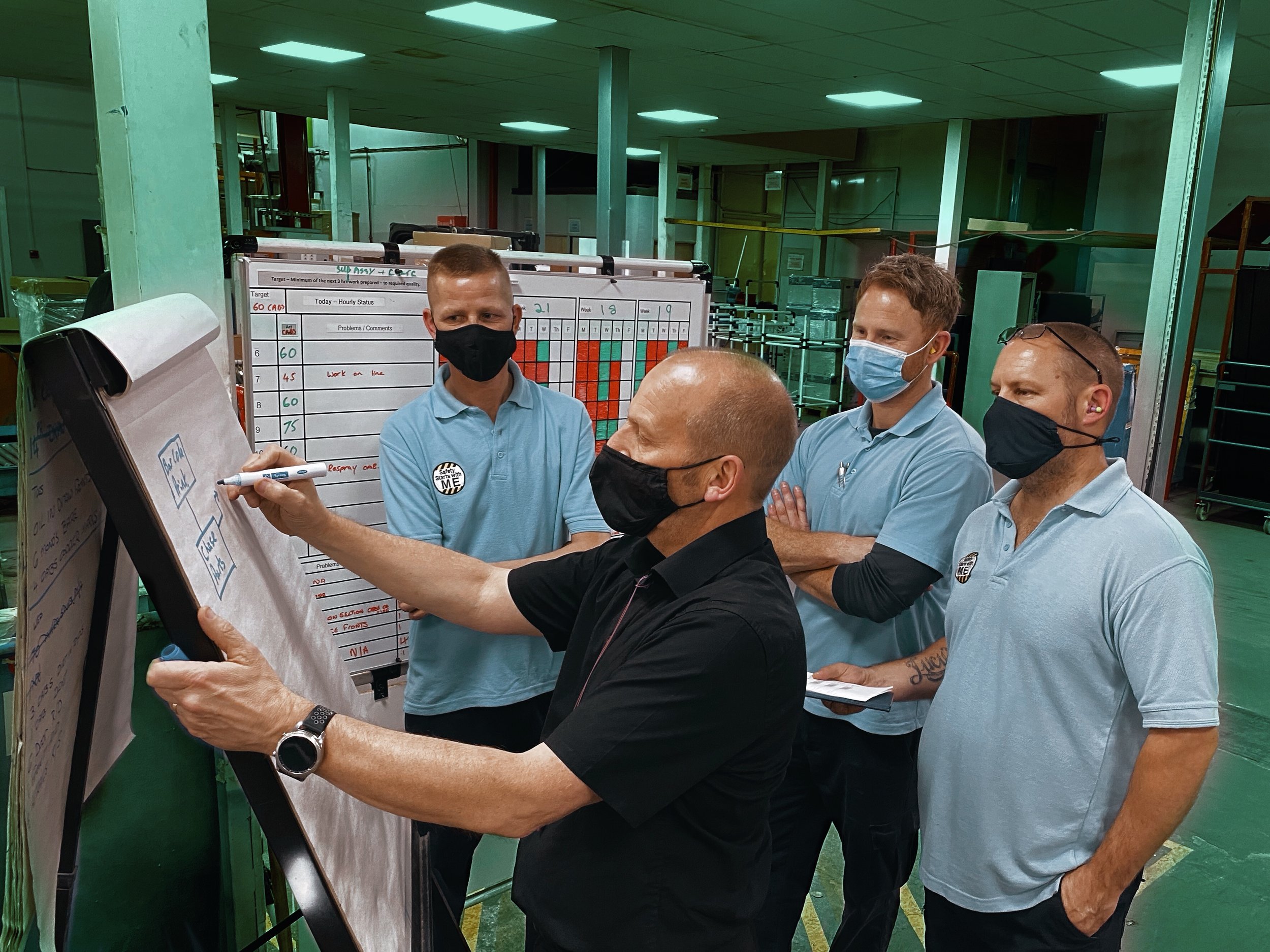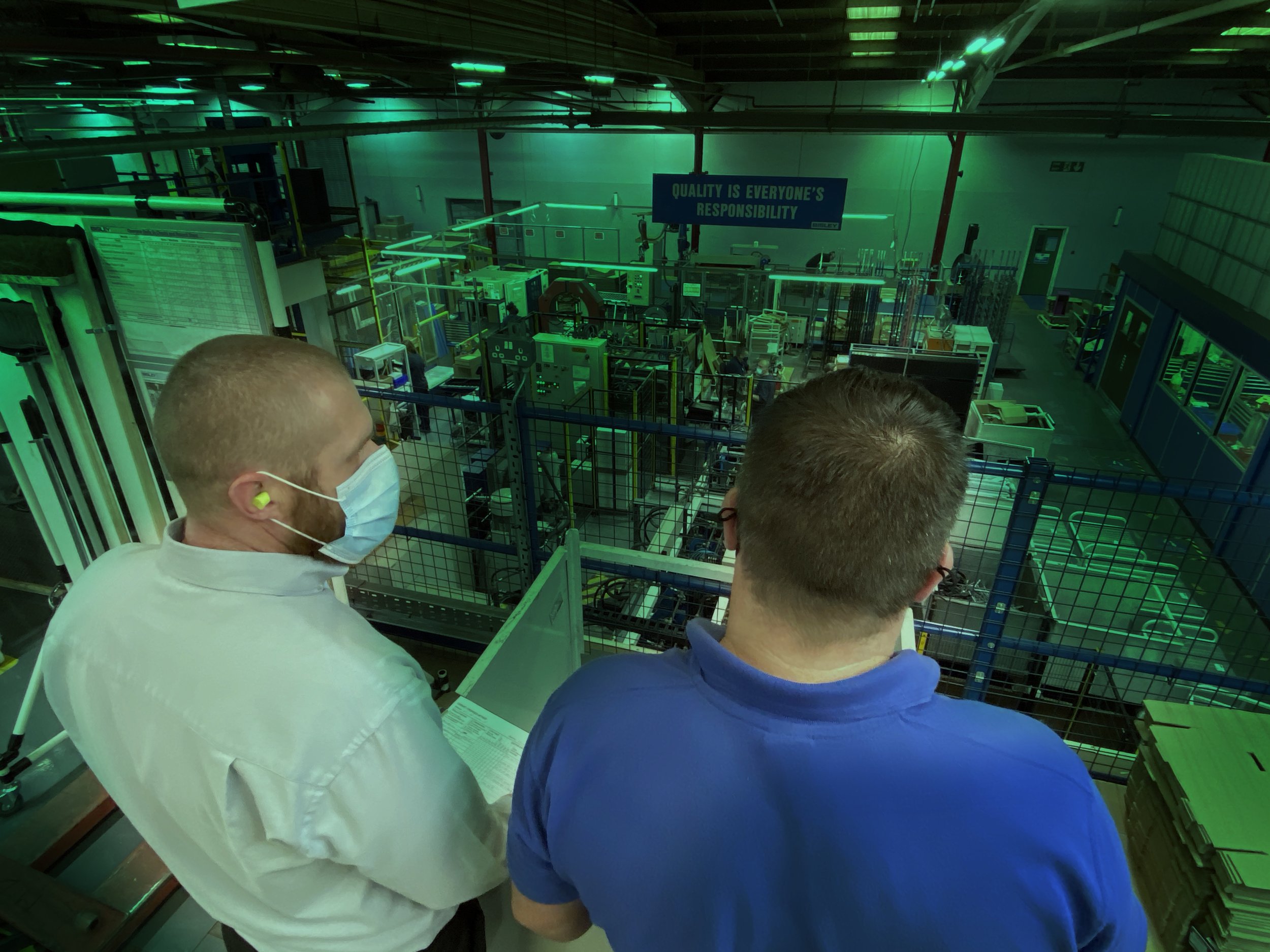
TWI JOB METHODS. TWI JM.
-
Impact
Safety: by making the method of work simpler, safer and easier, people are exposed to fewer risks
Quality: mistakes and variability are reduced through simpler, more reliable methods that are easier to perform and require less concentration
Productivity: operation work-content is dramatically reduced, enabling production of greater quantities of products and services with fewer people and resources
-
How it works
Attention to detail: TWI JM develops the ability to see work method details and understand their impact, so they can be questioned and improved.
Structured questioning: TWI Job Methods submits every method detail to intense questioning, generating a multitude of improvement ideas in a short time.
Method engineering made easy: method details are eliminated, combined, rearranged or simplified using a set of easy to use design principles.
-
Core elements
TWI JM 4-Step Method: a problem solving pattern that makes methods safer, easier, more reliable and more efficient.
Job Methods Breakdown: a record of all method details, observations and improvement ideas that is used to develop the new method
Simplify principles: easily accessible engineering design principles that enable supervisors to make methods safer, easier and more reliable.
Why TWI Job Methods?
Hands, hearts and minds
Engagement of front-line team members in continuous improvement has the potential of unlocking deep know-how and ensuring that changes stick. Yet improvement suggestion systems are often random, results disappointing. A better, more structured approach is needed to reliably create engagement and impact.
TWI Job Methods provides a common language and easy to learn improvement pattern supervisors and their teams can use together to improve processes and methods in their area.
TWI JM generates many more improvement ideas in a much shorter time than any other method. And as they come directly from the people doing the work, changes are much easier to implement and sustain.
Safer, better, more reliable
TWI Job Methods is ideally suited for team-based Kaizen and improvement workshops. It enables team members to discover and question many details of their current work methods they had previously taken for granted.
In addition to recording the details of the method, 6 Observation Questions are used to highlight aspects of how the work is done that need to be improved.
Thorough questioning leads to the development of a new method which is simpler, has fewer safety hazards, and requires less effort and concentration.
As a result, fewer accidents and mistakes occur and performance in all dimensions becomes more stable and predictable.
More for less
The purpose of TWI Job Methods is to enable supervisors to produce greater quantities of quality products and services in less time, by making better use of manpower, machines and material now available.
By thoroughly questioning each method detail supervisors and their teams discover substantial improvement potential. Many details of the work as it is performed today, such as walking, waiting, hesitating, searching and rework, are not necessary if the layout, method or sequence are changed.
By eliminating, combining, rearranging and simplifying method details, supervisors can eliminate work content, improve right first time and improve flow of people and products, resulting in dramatically improved productivity.
We can’t make good improvements without studying the work.…
in detail. When we observe accurately, we get all the facts. The more detailed and accurate our facts are, the more complete our improvements will be.
Three tools of TWI Job Methods
TWI JM is a foundational leadership skill that enables supervisors to make better use of people, equipment and materials now available with no or little need for any investment. It consists of three core elements: TWI Job Methods Breakdown, TWI JM 4-Step Method and Simplify Principles.
TWI Job Methods Breakdown
TWI Job Methods is a structured and very detailed way of improving the way work is done. It requires the recording of every aspect of the work in minute detail so it can be exposed and questioned. This way, no stone is left unturned, no detail or idea forgotten and nothing is taken for granted.
The TWI JM Breakdown sheet mirrors the TWI JM 4-Step Method, with columns for Method Details and Observations, Ideas, and New Method.
It captures all the details of the current method, observations about how it is done, the improvement ideas and the decisions the supervisor takes as she is develops the new method. Everything is visualised so other people can easily get involved.
It also contains a column for time and distances, which contributes further detail and rigour, and makes the JM Breakdown a versatile tool suited for a broad range of Kaizen improvement workshops.
TWI JM 4-Step Method
Like the other TWI J skills development programs, TWI Job Methods also has a 4-Step Method which the supervisors carries with her on a Pocket Card. This ensures that when a need for method improvement arises, the supervisors always repeats the same problem-solving pattern, which soon becomes second nature to her.
TWI JM starts by careful observation of the current method and any difficulties associated with it. All details and observations are recorded and subsequently questioned to bring out many ideas for simplifying and improving the method. By focusing on method details - every movement of the person - the supervisor learns to see inefficiencies and unnecessary effort and work done by her people.
This enables her to develop a new, safer, easier and more efficient method that she tests and refines with her people and then quickly puts to work.
Simplify principles
TWI Job Methods was designed to make industrial engineering principles accessible to everyday supervisors without sacrificing rigour and impact.
This is reflected in TWI JM’s relentless attention to detail as well as the Simplify Principles, which enable the supervisor to design workplace, layout, conveyance and tools in a way that makes the work less tiring, more reliable and easier to perform.
The Simplify Principles draw on the time-proven concepts and principles of motion ergonomics, visualisation and mistake-proofing. They clarify what good method design looks like and how to achieve it with low or no investment - in other words: in a way that is achievable by everyday supervisors.
Although not new to Lean and process improvement experts, it is through practical application by front-line supervisors that these principles can really be leveraged to make an big impact.
Developing a questioning attitude…
is key for the success of any improvement. Nothing is set in stone. We must question everything that is done; every single detail of the job.
TWI JM 4-Step Method
The Kaizen skill in improving methods can be easily acquired by repeating a time-proven pattern. The TWI Job Methods 4-Step Method enables supervisors to streamline how work is done and make best use of the people and resources. By using JM, supervisors ensure high quality and productivity in a safe environment.
STEP 1 - Break down the job
The supervisors observes the work as is currently done and records on the TWI Job Methods Breakdown exactly what the person does to make the product or perform the service.
These method details capture every single movement as well as thinking work and waiting of the person.
The supervisor also notes down observations about how the details are done which affect safety, effort, quality and flow and need to be improved.
STEP 2 - Question every detail
The supervisor and her team look at each of the method details in turn and question whether it is necessary and, if it is, where, when and by whom it should be done to increase performance. All ideas are noted down on the Job Methods Breakdown.
For each of the necessary details, the supervisor also asks exactly how it should be done to make it safer, easier and more reliable. Here the Simplify Principles are of great help in fine-tuning the method details.
STEP 3 - Develop new method
Whilst in Step 2 the focus is on generating ideas, in Step 3 the supervisor and her team now choose which ideas to take forward.
Details are eliminated, combined, rearranged and simplified as the new, usually much shorter, Job Methods breakdown is developed.
The new method is written down on the TWI JM Breakdown sheet, tested and further refined with the people doing the work.
STEP 4 - Apply new method
It is now time to put the new method to work, but not before getting the buy-in and necessary approvals to proceed.
Testing the new method has provided valuable data which are now included on the one-page Proposal Sheet summarising changes and benefits.
The supervisor then proceeds to training everyone involved and follows up on method and results whilst making any necessary adjustments.


